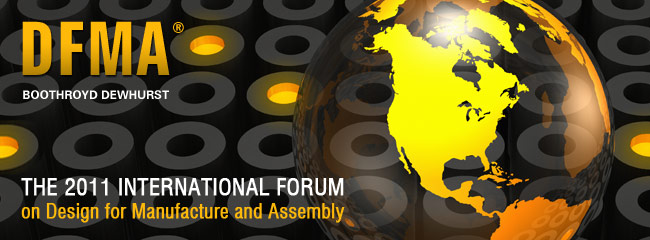Pull the product lever, now.
 If you’re reading this you’ve probably survived the great recession. You had to do some radical stuff, but you pulled it off. You cut to the bone as demand fell off, but you managed to shed staff and capacity and kept your company alive. Congratulations. Amazing work. But now the hard part: increased demand!
If you’re reading this you’ve probably survived the great recession. You had to do some radical stuff, but you pulled it off. You cut to the bone as demand fell off, but you managed to shed staff and capacity and kept your company alive. Congratulations. Amazing work. But now the hard part: increased demand!
Customers are ordering, and they want product now. You’re bringing on capacity, re-hiring, and re-training, and taking waste out of your processes with lean and even extending lean to your supply chain and logistics. You’re pulling the levers as hard as you can, but you know it won’t be enough. What you need is another lever, a big, powerful, magical lever to make everything better. You need to pull the product lever.
So, you’re telling me to look at my product as a way to meet increased demand? Yes. To get more products out of few factories? Yes. To make more products with a short staff? Yes. To reduce supply chain complexity? Yes. Pull the product lever, pull it hard, and pull it now.
But meeting increased demand is a manufacturing/supply chain problem, right? No. What about flogging suppliers for unreasonably short lead times? No. What about quickly bringing on unproven suppliers? No. What about bringing on a totally new factory by next week? No. What about using folks of the street to make the product? No. Pull the product lever, pull hard, and pull it now.
Dust off the value stream map of your supply chain and identify the three longest lead times, and design them out of your product. Dust off your routings and identify the three largest labor times, and design them out of our product. Dust off your BOMs and identify the three highest cost parts, and design them out of your product. Pull the product lever. Then, identify the next three, and pull it again. Then repeat. Pull it hard, and pull it now.
Meeting increased demand will be challenging, but your customers and stockholders deserve your best. So, pull hard on all your levers, and pull them now.
Missing Element of Lean – Assembly Magazine article
 With its strong focus on waste reduction of processes, lean has been a savior for those who’ve made it out of the great recession. But what’s next? I argue the next level of savings will come from adding a product focus to lean’s well-developed process focus. For the complete Assembly Magazine article (one page), click here.
With its strong focus on waste reduction of processes, lean has been a savior for those who’ve made it out of the great recession. But what’s next? I argue the next level of savings will come from adding a product focus to lean’s well-developed process focus. For the complete Assembly Magazine article (one page), click here.
Mental Walls
 Mental walls are more powerful than physical ones.
Mental walls are more powerful than physical ones.
With physical walls you know where they start and end and know if you can bust them down. With mental walls, you’re not sure.
With physical walls you know they exist – that they’re real. With mental walls, you’re not sure.
With physical walls you can blame someone for bad workmanship. With mental walls, you’re the workman.
The only way to tell a real wall from a mental one is to to take a run at it, but even then, you’re never really sure.
Money out the wazoo
 There’s a huge untapped source of profits out there – a virtual gold mine – with profit opportunities so large you can’t see them, and if you do see them, too large to believe. These profits larger than you’ve achieved with your traditional lean work. (Actually, what I’m talking about the next evolution of lean.) Want to see what I’m talking about? Go to your factory and watch. The gold mine will be hiding in plain sight – it’s your product.
There’s a huge untapped source of profits out there – a virtual gold mine – with profit opportunities so large you can’t see them, and if you do see them, too large to believe. These profits larger than you’ve achieved with your traditional lean work. (Actually, what I’m talking about the next evolution of lean.) Want to see what I’m talking about? Go to your factory and watch. The gold mine will be hiding in plain sight – it’s your product.
Huge savings blah, blah, blah. How significant? Here’s the formula:
material cost x volume x 50%.
Now, for your highest volume product, do the calculation. Go ahead. Do it. Humor me. It’s worth it.
Go get your best pen, and calculate by hand. Write down the number. Go ahead. Write it down, but make sure you put the dollar sign in front, and, please, put in the commas. Don’t abbreviate thousands, millions, or billions (or trillions, Mr. Gates) – write the zeros. All of them.
There. You did it. Not so hard. Now, sit quietly, and contemplate the number. Look at it for an hour. Don’t say anything, just sit with it.
Now, get bigger piece of paper, and re-run the calculation, but this time write big. Repeat with a poster board, and finish with your biggest whiteboard – big zeros, lot’s of them. (Don’t forget the commas.) Marinate for an hour. Don’t say anything, just sit.
Now that you appreciate the significance of the number, go make something happen. If you’re a CEO, tell your engineering leader to do DFMA; if you’re the manufacturing leader, grab your engineering leader by the ear, and walk to the whiteboard; if you’re the engineering leader, do DFMA.
You likely don’t believe the number. I know. It’s okay. But, a number that big at least deserves a Google search: save 50% with DFMA.
Upcoming Workshop on Systematic DFMA Deployment
 I will be running a half-day workshop on Systematic DFMA Deployment on June 13 in Providence, RI. The workshop will kick of BDI’s 2011 International Forum on Design for Manufacturing and Assembly and will focus on how to incorporate DFMA into your product development process.
I will be running a half-day workshop on Systematic DFMA Deployment on June 13 in Providence, RI. The workshop will kick of BDI’s 2011 International Forum on Design for Manufacturing and Assembly and will focus on how to incorporate DFMA into your product development process.
The Forum (June 14, 15) is the yearly gathering of the world’s leading DFMA experts. It is THE place to learn about DFMA and see examples and results from leading companies.
I urge the product development community to attend.
I am also presenting at the Forum and hope to finally meet you in person.
Work that creates wealth
 Today’s biggest problems are difficult to solve and our approach to solving them isn’t helping. Whether it’s healthcare, education, infrastructure, defense, or the economy we never get past the wrong question: “Who’s going to pay for it?
Today’s biggest problems are difficult to solve and our approach to solving them isn’t helping. Whether it’s healthcare, education, infrastructure, defense, or the economy we never get past the wrong question: “Who’s going to pay for it?
With healthcare we argue about costs and taxes – who pays and how much. But we’ve got to move past that argument. The real deal is we create insufficient wealth. (Our inability to pay for healthcare is a symptom.) So the real solution must focus on work that creates wealth, real wealth. I’m not talking about merger and acquisition wealth. I’m talking about real wealth generated by inventing, designing, and making products. I’m talking about manufacturing – creating products out of dirt, rocks, and sticks and selling them for more than the cost to make them. With more manufacturing we can fix healthcare. (I also think we should look deeply at the work of providing healthcare and improve the work.)
With education we argue about costs and taxes – who pays and how much. But we’ve got to move past that argument. The real deal is we create insufficient wealth. (Our inability to pay for education is a symptom.) So the real solution must focus on work that creates wealth, real wealth. I’m not talking about merger and acquisition wealth. I’m talking about real wealth generated by inventing, designing, and making products. I’m talking about manufacturing — creating products. With more manufacturing we can fix education. (I also think we should look deeply at the work of providing education and improve the work.)
With infrastructure we argue about costs and taxes – who pays and how much. But we’ve got to move past that argument. The real deal is we create insufficient wealth. (Our inability to pay for infrastructure is a symptom.) So the real solution must focus on work that creates wealth, real wealth. I’m talking about real wealth generated by inventing, designing, and making products. I’m talking about manufacturing — creating products. With more manufacturing we can fix our infrastructure. (I also think we should look deeply at the work of creating and maintaining infrastructure and improve it.)
With defense we argue about costs and taxes – who pays and how much. But we’ve got to move past that argument. The real deal is we create insufficient wealth. (Our inability to pay for defense is a symptom.) So the real solution must focus on work that creates wealth, real wealth. I’m talking about manufacturing — creating products. With more manufacturing we can fix defense. (I also think we should improve the work of providing defense.)
Pulling it all together, with the economy we argue about taxes – who pays and how much. But we’ve got to move past that argument. The real deal is we create insufficient wealth. (Our economy’s health is a symptom.) So the real solution must focus on work that creates real wealth. I’m talking about manufacturing. With more manufacturing the economy will fix itself.
Thankfully we all have different views on healthcare, education, infrastructure, and defense, and I want to preserve them. (That’s what makes our country great.) However, I think we can all agree that creating more wealth will improve our chances of fixing our big problems.
Let’s do more manufacturing.
Treat your parts like your children
 There’s lots of charged debate these days on the strengths and weakness of in-sourcing and outsourcing. That’s good. But what’s a company to do?
There’s lots of charged debate these days on the strengths and weakness of in-sourcing and outsourcing. That’s good. But what’s a company to do?
I’d like to propose a new framework to think through the situation. I call it the Parental Framework. (I get to name it since I just invented it.) There’s only one tenet – think of your parts like your children.
When they’re young you take care of their every need. They cry and you jump. If not, they make you pay with sleepless nights.
As they grow you still take care of them. But now it’s about control. They gain independence and try to go where they want. You continually bring them back to center. Their independence scares you, and it should. You cringe when you think of what can happen to them. Take your eye off them for a minute and all hell could break loose.
When they go to school you become deeply concerned with the systems and processes that control the quality of their education.
Before you dare go out for a nice evening with your spouse (I heard that happens now and again), you do background checks on potential babysitters because the consequences of a bad one are severe. The slightest question of the sitter’s capability fills you with anxiety. No chance of connecting with your spouse. It’s all about the little ones.
The Parental Framework may be a bridge too far, but I find it helpful. I like thinking about my parts as my children. It works for me.
Declare Success
 All projects are successful; it’s just a matter of choosing what to declare. Here are some good choices:
All projects are successful; it’s just a matter of choosing what to declare. Here are some good choices:
- Success – We know when a project is too big. Going forward, let’s do smaller ones.
- Success – We know we can run too many projects concurrently. Going forward, let’s do fewer and get more done.
- Success – We know we can’t make that in-house. Going forward, let’s find a suppler with world class capability.
- Success – We know the consequences of going too quickly. Going forward, let’s take our time and get it right.
- Success – We know what customers won’t buy. Going forward, let’s know if they’ll buy it before we make it.
- Success – We know the consequences of going too slowly. Going forward, let’s be more efficient and launch sooner.
- Success – We know when quality levels are too low. Going forward, let’s launch with higher quality.
- Success – We know we can’t outsource that. Going forward, let’s make it in-house.
- Success – We know the attributes of a bad project manager. Going forward, let’s hire one that knows how to run projects.
Celebrate the learning, incorporate it in your go-forward plan, and go forward. Success.
The Gravity of Intrinsic Motivation
 Work can be exceptionally profitable, work can dovetail perfectly with strategy, and work can make perfect business sense. Though these attributes seem powerful, they’re insufficient for work to carry the day. But there’s a far more powerful force out there, a force that virtually guarantees that work will take on a life of it’s own, that work will go viral. That force? Intrinsic motivation.
Work can be exceptionally profitable, work can dovetail perfectly with strategy, and work can make perfect business sense. Though these attributes seem powerful, they’re insufficient for work to carry the day. But there’s a far more powerful force out there, a force that virtually guarantees that work will take on a life of it’s own, that work will go viral. That force? Intrinsic motivation.
Work must be meaningful. The team, or you, must have a personal reason, a vested reason, an intrinsic reason why the work should happen. Otherwise, it’s a crap shoot. Otherwise, it takes massive effort and powerful control mechanisms to roll work up hill. What a waste. The energy spent on pushing should be spent on the work. Imagine if pushing energy was converted to advancing-the-work energy.
With intrinsic motivation, work accelerates down hill. Intrinsic motivation is the gravity that pull on work, builds momentum, and steam-rolls those in the way. (Although intrinsic motivation has been known to clear the way of those who can help.) Intrinsic motivation flows work over and around rocks, tirelessly smooths sharp edges, and uproots sticks-in-the mud. (You know who I’m talking about.)
Do you and your work have intrinsic motivation? I certainly hope so. How do you tell? Here’s how:
Question: Why do you want this work to happen?
Answers – missing intrinsic motivation:
- Because my boss told me to do it.
- I don’t really care if the work happens or not.
- I’m just here for the free doughnuts.
Answers – with intrinsic motivation:
- Because it’s important to me.
- Because it will benefit my kids.
- That’s a stupid question. You don’t know? I’m glad you’re not on the team. Get out of my way.
Intrinsic motivation makes a big difference, it changes the game. It’s like the difference between pushing against gravity and rolling down hill with a tail wind. You should know if you have it. If you don’t you should be ready to push like hell for a long time.
Acid test — does your work cause you to pole vault out of bed? If not, find new work.
For more on intrinsic motivation, here’s a video link — Indiana Jones and the boulder of intrinsic motivation.
For daily tweets, find me at Twitter — @MikeShipulski
Great coaches invest.
 Great coaches invest. They’re all-in. It’s that simple. They know what you need and give it you. No need to ask. (And that’s best because often you don’t want it.) Great coaching is like medicine – tastes like crap and three years later you feel better.
Great coaches invest. They’re all-in. It’s that simple. They know what you need and give it you. No need to ask. (And that’s best because often you don’t want it.) Great coaching is like medicine – tastes like crap and three years later you feel better.
Great coaches are grounded in the reality of doing. They believe in sweat, struggle, and pain. They’re all about doing.
Great coaches don’t give options when options are not best. Sure, they know there are options, but they know they’re not for you. Great coaches take control of your best interests until you’re ready. One day at high school track practice my coach told me I was the anchor leg for the mile relay. (I didn’t know I was on the ballot.) He looked me in the eye and said – “There’s only one rule to running last – don’t let anyone pass you.” For the remaining three years of my career I never did.
Great coaches coach everyone differently. Sure they work within their framework, but the coaching is designed to fit you, not them.
Great coaches push down hard to get you to stand taller. At baseball practice one hot summer afternoon (I was sixteen) my coach had us run repeatedly on and off the field to make sure we did it right. (He believed in practicing all facets of the game.) For the first five times, or so, I ran. Most jogged, but I ran. (I always hustled.) But, on the next one I jogged. Loudly, forcefully, angrily, in front of everyone, he said, “What the hell is going on? We’ve been playing like crap lately and now our best play is jogging off the field. What the hell is going on? We’re going to do it again because he jogged.” He gave me what I needed – his medicine fit and I stood taller. (Over our six years together that was the only time he yelled about my behavior.)
Great coaches are great because they always tell the truth. Great coaches are great because they invest.

 Mike Shipulski
Mike Shipulski